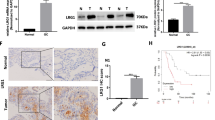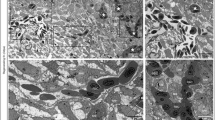Abstract
The migration and proliferation of EPCs are crucial for re-endothelialization in vascular repair and development. Id1 has a regulatory role in the regulation of EPCs migration and proliferation. Based on these findings, we hypothesized that Id1 plays a regulatory role in modulating the migration and proliferation of EPCs by interaction with other factors. Herein, we report that the Id1 protein and E-box protein E2-2 regulate EPCs function with completely opposite effects. Id1 plays a positive role in the regulation of EPC proliferation and migration, while endogenous E2-2 appears to be a negative regulator. Immunoprecipitation and immunofluorescence assay revealed that the Id1 protein interacts and co-localizes with the E2-2 protein in EPCs. Further, endogenous E2-2 protein was found to block EPCs function via the inhibition of FGFR1 and VEGFR2 expression. The overexpression and silencing of Id1 have no direct regulatory role on VEGFR2 and FGFR1 expression. On the other hand, Id1 relieves the E2-2-mediated repression of FGFR1 and VEGFR2 expression to modulate EPCs proliferation, migration, and tube formation in vitro. In summary, we demonstrated that Id1 and E2-2 are critical regulators of EPCs function in vitro. Id1 interacts with E2-2 and relieves the E2-2-mediated repression of FGFR1 and VEGFR2 expression to modulate EPCs functions. Id1 and E2-2 may represent novel therapeutic targets for re-endothelialization in vascular damage and repair.





Similar content being viewed by others
References
Zampetaki A, Kirton JP, Xu Q (2008) Vascular repair by endothelial progenitor cells. Cardiovasc Res 78:413–421. doi:10.1093/cvr/cvn081
Miller-Kasprzak E, Jagodzinski PP (2007) Endothelial progenitor cells as a new agent contributing to vascular repair. Arch Immunol Ther Exp (Warsz) 55:247–259. doi:10.1007/s00005-007-0027-5
Kirton JP, Xu Q (2010) Endothelial precursors in vascular repair. Microvasc Res 79:193–199. doi:10.1016/j.mvr.2010.02.009
Smart N, Dube KN, Riley PR (2013) Epicardial progenitor cells in cardiac regeneration and neovascularisation. Vasc Pharmacol 58:164–173. doi:10.1016/j.vph.2012.08.001
Sun XH (1991) Id proteins Id1 and Id2 selectively inhibit DNA binding by one class of helix-loop-helix proteins. Mol Cell Biol 11:5603–5611
Benezra R, Rafii S, Lyden D (2001) The Id proteins and angiogenesis. Oncogene 20:8334–8341
El-Hashash AH, Warburton D, Kimber SJ (2010) Genes and signals regulating murine trophoblast cell development. Mech Dev 127:1–20. doi:10.1016/j.mod.2009.09.004
Wang H, Yu Y, Guo RW, Shi YK, Song MB, Chen JF, Yu SY, Yin YG, Gao P, Huang L (2010) Inhibitor of DNA binding-1 promotes the migration and proliferation of endothelial progenitor cells in vitro. Mol Cell Biochem 335:19–27. doi:10.1007/s11010-009-0236-9
Wikström I (2006) E2-2 regulates the expansion of pro-B cells and follicular versus marginal zone decisions. J Immunol 177:6723–6729
Tanaka A, Itoh F, Itoh S, Kato M (2009) TAL1/SCL relieves the E2-2-mediated repression of VEGFR2 promoter activity. J Biochem 145:129–135. doi:10.1093/jb/mvn158
Rutherford MN, Lebrun DP (1998) Restricted expression of E2A protein in primary human tissues correlates with proliferation and differentiation. Am J Pathol 153:165–173
Liu X, Yang H, Su Y, Tan Z, Zhu Q, Wang H, Wards C (2014) Construction of adenovirus vector of E2–2 and its effects on expression of ID1, and growth and proliferation in endothelial progenitor cells. J Third Mil Med Univ 36:1664–1669
Tanaka A, Itoh F, Nishiyama K, Takezawa T, Kurihara H, Itoh S, Kato M (2010) Inhibition of endothelial cell activation by bHLH protein E2-2 and its impairment of angiogenesis. Blood 115:4138–4147. doi:10.1182/blood-2009-05-223057
Li W, Wang H, Kuang CY, Zhu JK, Yu Y, Qin ZX, Liu J, Huang L (2012) An essential role for the Id1/PI3 K/Akt/NFkB/survivin signalling pathway in promoting the proliferation of endothelial progenitor cells in vitro. Mol Cell Biochem 363:135–145. doi:10.1007/s11010-011-1166-x
Watabe T (2011) Roles of old players in the suppression of a new player: networks for the transcriptional control of angiogenesis. J Biochem 149:117–119
Einarson MB, Chao MV (1995) Regulation of Id1 and its association with basic helix-loop-helix proteins during nerve growth factor-induced differentiation of PC12 cells. Mol Cell Biol 15:4175–4183
Baliga V (2012) Molecular mechanisms and modulation of endothelial progenitor cell function in South Asian men. University of Leeds
Noseda M, Chang L, McLean G, Grim JE, Clurman BE, Smith LL, Karsan A (2004) Notch activation induces endothelial cell cycle arrest and participates in contact inhibition: role of p21Cip1 repression. Mol Cell Biol 24:8813–8822. doi:10.1128/MCB.24.20.8813-8822.2004
Langlands K (1997) Differential interactions of id proteins with basic-helix-loop-helix transcription factors. J Biol Chem 272:19785–19793
Jogi A, Persson P, Grynfeld A, Pahlman S, Axelson H (2002) Modulation of basic helix-loop-helix transcription complex formation by Id proteins during neuronal differentiation. J Biol Chem 277:9118–9126. doi:10.1074/jbc.M107713200
Yang W, Itoh F, Ohya H, Kishimoto F, Tanaka A, Nakano N, Itoh S, Kato M (2011) Interference of E2-2-mediated effect in endothelial cells by FAM96B through its limited expression of E2-2. Cancer Sci 102:1808–1814. doi:10.1111/j.1349-7006.2011.02022.x
Liu YP, Burleigh D, Durning M, Hudson L, Chiu IM, Golos TG (2004) Id2 is a primary partner for the E2-2 basic helix-loop-helix transcription factor in the human placenta. Mol Cell Endocrinol 222:83–91. doi:10.1016/j.mce.2004.04.016
Liu Y (1998) A splice variant of E2-2 basic helix-loop-helix protein represses the brain-specific fibroblast growth factor 1 promoter through the binding to an imperfect E-box. J Biol Chem 273:19269–19276
Chen SY, Wang F, Yan XY, Zhou Q, Ling Q, Ling JX, Rong YZ, Li YG (2009) Autologous transplantation of EPCs encoding FGF1 gene promotes neovascularization in a porcine model of chronic myocardial ischemia. Int J Cardiol 135:223–232. doi:10.1016/j.ijcard.2008.12.193
B Möller (2001) Expression of the angiogenic growth factors VEGF, FGF-2, EGF and their receptors in normal human endometrium during the menstrual cycle. Mol. Hum. Reprod. 7:65–72(68)
Acknowledgments
This research was supported by the National Natural Science Foundation of China (Grant No. 81270224).
Author information
Authors and Affiliations
Corresponding author
Ethics declarations
Conflict of interest
The authors declare no conflict of interest.
Additional information
Yang Yu and Yuan Liang have contributed equally to this work.
Electronic supplementary material
Below is the link to the electronic supplementary material.
Rights and permissions
About this article
Cite this article
Yu, Y., Liang, Y., Liu, X. et al. Id1 modulates endothelial progenitor cells function through relieving the E2-2-mediated repression of FGFR1 and VEGFR2 in vitro. Mol Cell Biochem 411, 289–298 (2016). https://doi.org/10.1007/s11010-015-2591-z
Received:
Accepted:
Published:
Issue Date:
DOI: https://doi.org/10.1007/s11010-015-2591-z




